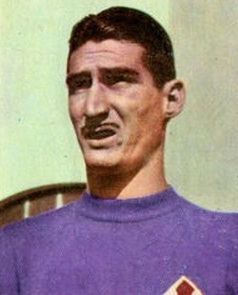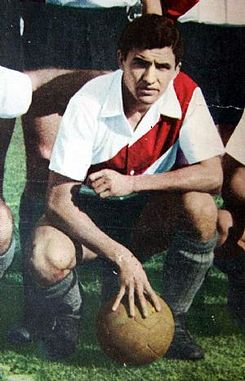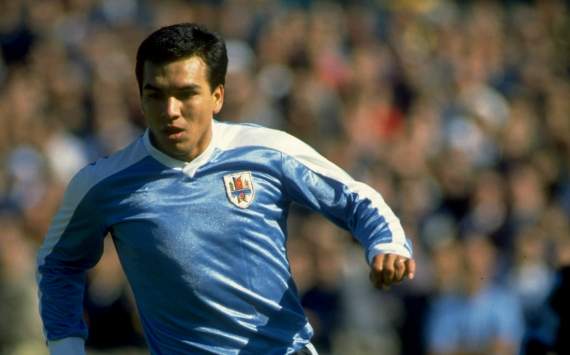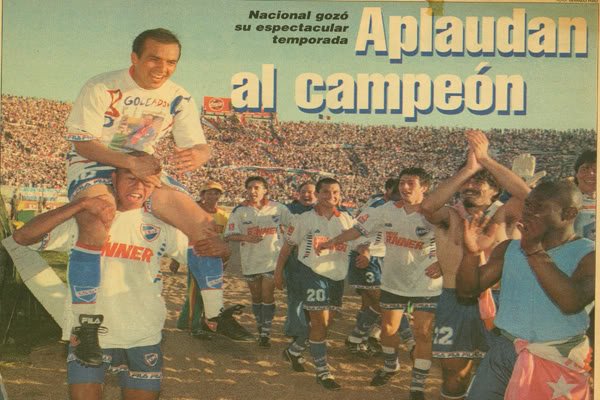MounchesterUtd
New Member
- Joined
- May 26, 2016
- Messages
- 2,059
You need to play at least 4 outfield Pool 2 players. I generally use sharemytactics.com
Thanks!
You need to play at least 4 outfield Pool 2 players. I generally use sharemytactics.com




Former Alianza Lima player Manuel Grimaldo said:"Even Alliance defenses were working, were dribblers. Victor Benitez came with dominated ball.Guillermo Delgado kept the ball in the area, killed with his chest (and performs a demonstration with the body) and out there in the middle.
I even shook, because he said take it away right now. But they had a lot of personality, a lot of skill.Guillermo Delgado is the best I've seen in the history of Peruvian soccer. I played with Benitez, with Donayre, with Chumpitaz, is also good player ..."

Luis Artime on himself said:"My greatest virtue was to pre - empt the move, get a second before the opponent and then define. It was an intuitive thing in me that I find difficult to explain."
Click on the post number (#1524 in your case), it'll give you the direct link to this messageDoes anyone know how to link to a specific part of a page so I can link these in my OP?
Click on the post number (#1524 in your case), it'll give you the direct link to this message
The Americas Draft
P-Nut/Downcast vs Boris (AM start)
They probably mean before 12PM BST - or morning startGents, can you clarify what you mean by this?
You want me to start the match just past midnight (UTC) on Friday?
@P-Nut0712 @Downcast @BorisDeLeFora
They probably mean before 12PM BST - or morning start
General notice:
When a full PM is copy/pasted into the OP (match thread) certain features are lost (or isn't transferred properly): Off the top of my head, text colour and special formating such as bullet points. So, keep that in mind.
Spoilers are alright - they don't transfer properly but can be remade easily. But text colour and bullet points, etc. - that ain't something I'll be arsed to re-create in the OP. So, including those features is essentially pointless.
Links are good - they transfer directly with no issues.
Just letting you know.
Does this happen even if you click reply on the PM and then copy it from there?
That works - not 100% sure on bullet points, but colours transfer fine.
So, basically - disregard the notice and carry on!
I had that problem with the Billy No Mates draft. I spent about 40 mins re-coding an elaborately long OP and then I think EAP pointed it out to me and it made it a hell of a lot quicker.






@Chesterlestreet @harms Since substitutes are banned, maybe it's worth considering if we should make polls private and votes only visible after having voted. Still should be able to change, but imo it's better if we get the vote without current spread skewing the result.
@Chesterlestreet @harms Since substitutes are banned, maybe it's worth considering if we should make polls private and votes only visible after having voted. Still should be able to change, but imo it's better if we get the vote without current spread skewing the result.
BTW is it technically possible to have a poll where votes are anonymous?
That would be a good option. The temptation to vote for a side that is losing is always there, even subconsciously sometimes.I'd like to hear from more people on this, by the way. We've talked about it before, as I recall, but never reached any firm conclusions:
Put it like this: What would be the potential downside to making the results invisible (before voting)?
The upside is obvious: The voters won't be influenced by the score and won't vote tactically in the sense of "voting for a draw", etc.
I'd like to hear from more people on this, by the way. We've talked about it before, as I recall, but never reached any firm conclusions:
Put it like this: What would be the potential downside to making the results invisible (before voting)?
The upside is obvious: The voters won't be influenced by the score and won't vote tactically in the sense of "voting for a draw", etc.
Yeah I suggested it as well before so I'm all for it. Can't see a downside really.I'd like to hear from more people on this, by the way. We've talked about it before, as I recall, but never reached any firm conclusions:
Put it like this: What would be the potential downside to making the results invisible (before voting)?
The upside is obvious: The voters won't be influenced by the score and won't vote tactically in the sense of "voting for a draw", etc.
Its not a downside per se, but its often quite obvious how the match is going from followiing the thread even if you don't click to see the score. Also, people might vote earlier than usual to see the score, which could feasibly make the arguments presented during the match threads less important. This is obviously mitigated by allowing people to change their votes, but then its all rendered somewhat pointless as people then know the score before voting for the final time...I've just confused the feck out of myself.
I feel that viewing the votes before voting can influence a voter's outlook on the two teams. If the votes are close, the voter may view the teams as being equal and actually try to scrutinize both teams before voting. If the voting goes one way or another, however, some voters may have that influence their analysis of both teams; the voter may scrutinize the losing team some more to look for weaknesses whilst trying to figure out what makes the winning team better rather than objectively looking at both teams.I'd like to hear from more people on this, by the way. We've talked about it before, as I recall, but never reached any firm conclusions:
Put it like this: What would be the potential downside to making the results invisible (before voting)?
The upside is obvious: The voters won't be influenced by the score and won't vote tactically in the sense of "voting for a draw", etc.
Just stipulate that voters should only vote when they're pretty sure who to vote for (as opposed to just switching around)
...which brings us to another proposed change: 12hr polls.
First 12hrs: Discussion only. Then the poll is added after the 12hr mark - and stands for 12hrs.
I'm pretty sure it can be done technically. Doesn't have to be exactly on the dot either - roughly 12hrs will do.
Seeing the number of votes in the first games and that some of the voters are in different timezones I'm not sure that would be positive to be honest. At the moment we have 10-15 votes that decide each game, if we implement 12 hrs I think it could very well be just half that.
@MounchesterUtd hasn't been online since 2am.It's gotten a bit late now. When will today's match start?
It's gotten a bit late now. When will today's match start?
...which brings us to another proposed change: 12hr polls.
First 12hrs: Discussion only. Then the poll is added after the 12hr mark - and stands for 12hrs.
I'm pretty sure it can be done technically. Doesn't have to be exactly on the dot either - roughly 12hrs will do.

